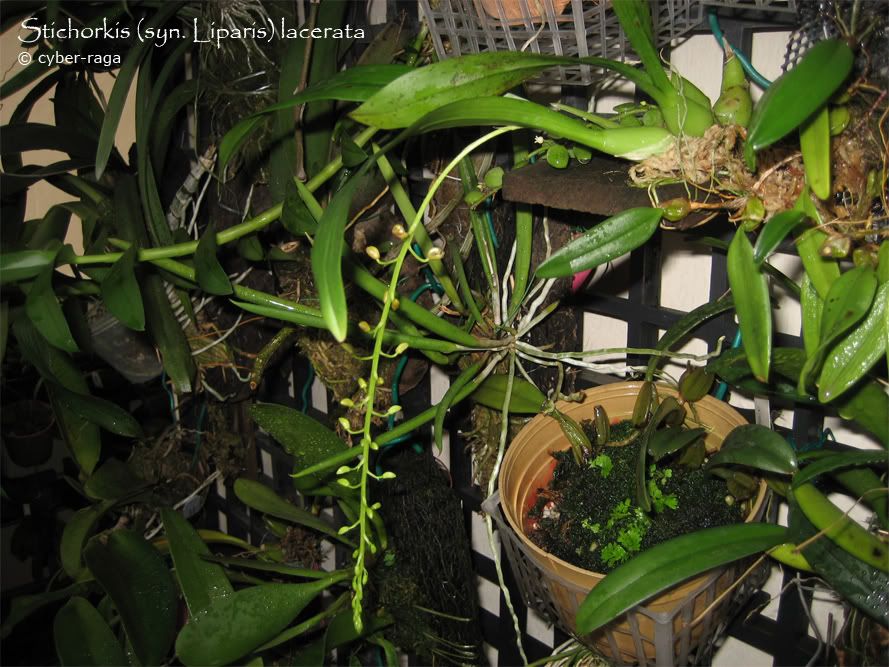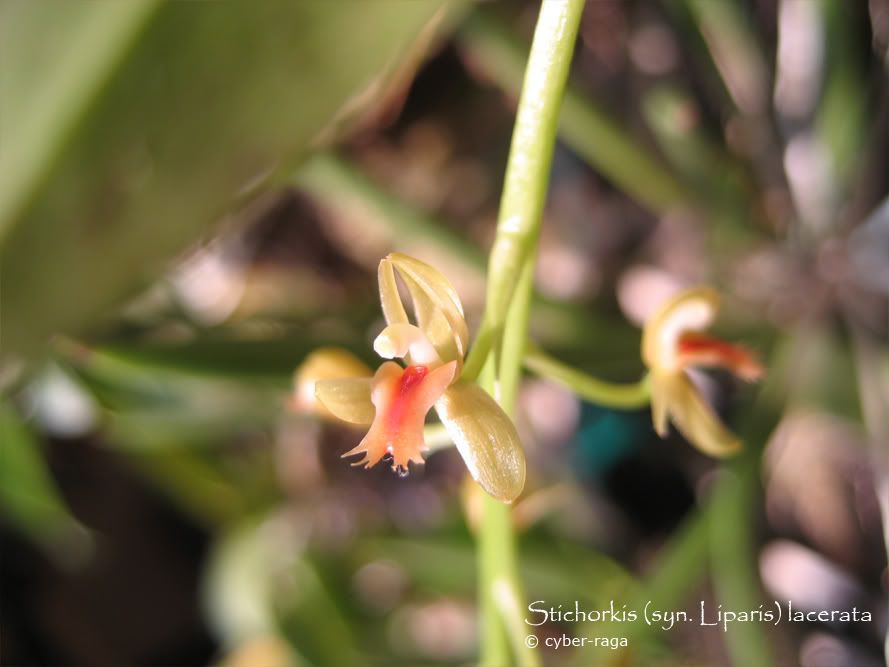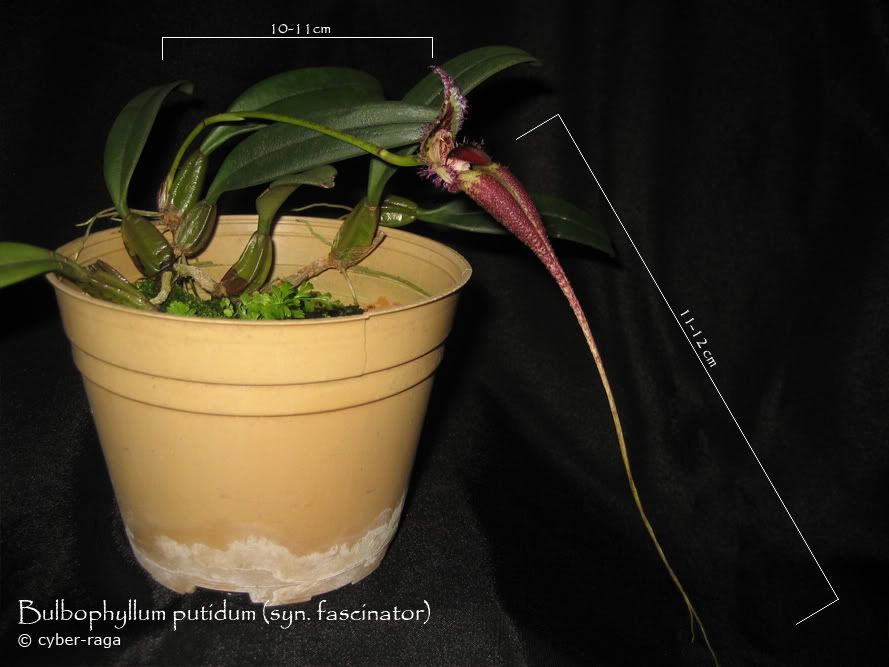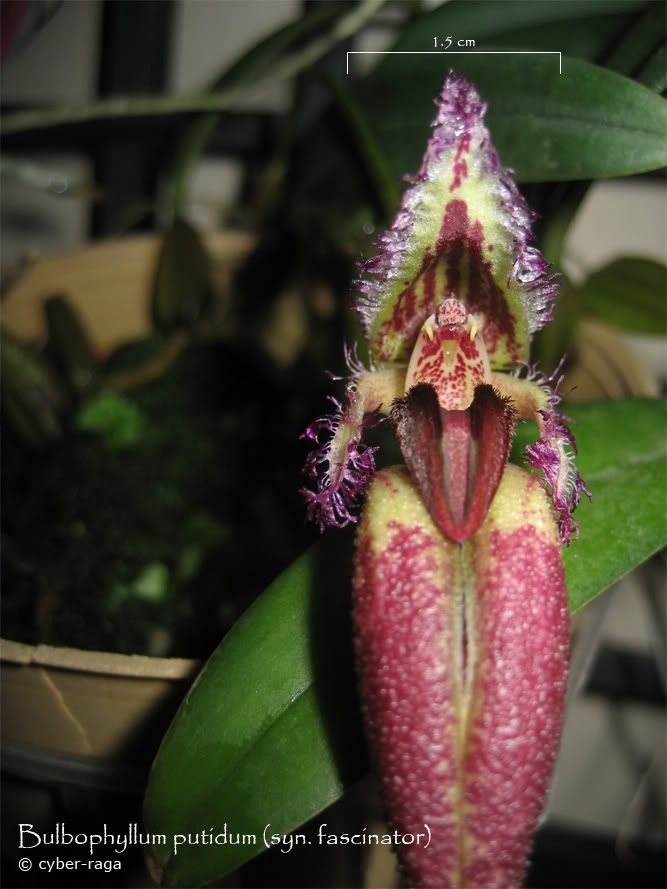Ridl. 1886
Section: Cestichis
This young orchid have been savaged previously from the mother plant that has suffered from basal rot around 2-3 years ago. The mother plant eventually died off, but fortunately this young offspring with 1-2 back bulbs have manage to re-establish itself on a small piece of wood mount. Although the plant have survived, its growth have been stunned and only managed to produce 1-2 new bulbs recently.
I have added a small amount of moss around the root area and placed the wood horizontally to retain some moisture. The plant was watered sparingly in the morning and evening to prevent the re-occurrence of basal rot.
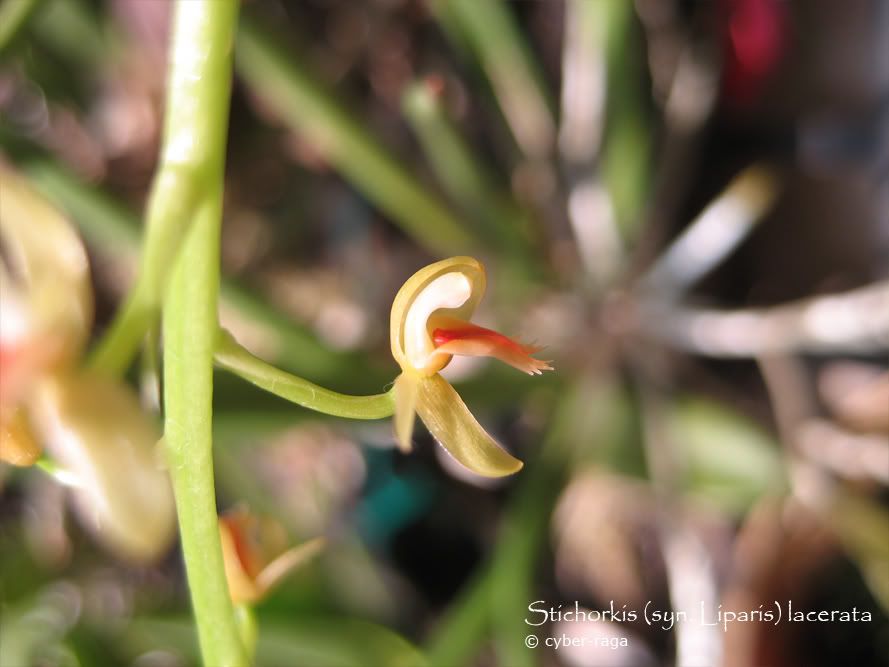 |
| Close-up of flower bud unfolding its petal. |

